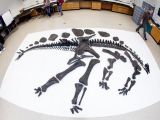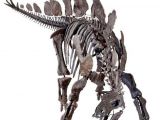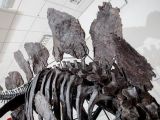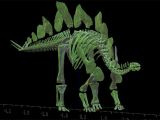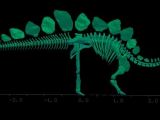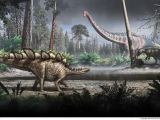Come December, a dinosaur skeleton will go on display at the Natural History Museum in London, UK. The skeletal remains, photos of which are included in the gallery below, are estimated to be about 150 million years old.
Folks at London's Natural History Museum say that the fossilized remains, which belong to a Stegosaurus stenops specimen, will make their public debut on December 4, when they will be put on display in the Earth Hall.
Why you might want to go see this skeleton
The dinosaur remains set to go on public display in London this coming December were discovered back in 2003 in Wyoming, US. The skeleton took about three weeks to excavate. When they put all the bits and pieces in their right place, paleontologists had the surprise of a lifetime.
Thus, they discovered that the fossilized dinosaur skeleton was nearly complete. More precisely, all that was missing was its left arm and the base of its tail. This makes it the most complete Stegosaurus stenops skeleton to have until now been unearthed anywhere in the world.
Professor Paul Barrett says that Stegosaurus stenops was first documented as a self-standing species some 130 years ago. However, seeing how fossilized remains belonging to such creatures were few and far between for decades, paleontologists had trouble making head and tail of these dinosaurs' anatomy.
Now that the scientific community finally has a nearly complete Stegosaurus stenops skeleton to work with, it is to be expected that it will not be long now until paleontologists know more about these beasts that roamed the Earth some 155 million to 150 million years ago.
Is the skeleton really all that impressive?
Apparently, it most definitely is. For starters, it stands about 10 feet (approximately 3 meters) tall. It packs roughly 300 different bones, and it measures an impressive 18.3 feet (5.6 meters) in length.
As if its sheer size weren't enough to turn some heads, folks at the Natural History Museum say that, apart from the bones that used to be part and parcel of the animal's limbs, torso, head, and tail, this skeleton comes complete with nearly two dozen back plates and four tail spikes.
Paleontologists who have had the chance to examine the skeleton say the Stegosaurus stenops that left it behind most likely tipped the scale at about 2 tonnes at the time when it died. They don't know whether it was a male or a female, but they are convinced that it was still young when it perished.
The fossilized remains aren't just for show
It is understood that the skeleton arrived at London's Natural History Museum back in December, 2013. Scientists have been studying it ever since, and have even managed to put together a three-dimensional model documenting its makeup. Still, they say that there is plenty of work left to do.
Thus, they wish to study the anatomy of the creature's skull in further detail. The goal is to gain a better understanding of the dinosaur's eating habits, maybe even determine the strength of its bite.
“Stegosaurus fossil finds are rare. Having the world's most complete example here for research means we can begin to uncover the secrets behind the evolution and behavior of this intriguing dinosaur species,” Professor Paul Barret explains.
“We hope that this amazing specimen will inspire a new generation of young visitors to learn more about the natural world and our place within it,” he adds.
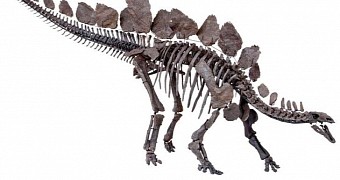
 14 DAY TRIAL //
14 DAY TRIAL // 
